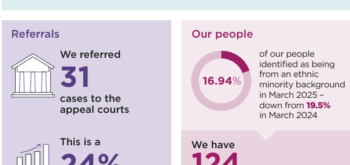The recent pronouncement by the Ministry of Justice that it is considering a complete ban on smoking in prisons highlights a debate we should be having about how we run our prisons. Current concerns concentrate on how can we run prisons more cheaply and it is not unreasonable at a time of austerity to expect all public services to cut costs. Pic from Flickr, from 4.D
But prisons are complex communities where short term gain can lead to long-term pain.
We have a choice in how we run our prisons: by co-operation or by coercion. The former is an anathema to the majority of general public who believe that prison provides strict order and control where prisoners do as they are told.
But what stops the 1200 prisoners in Wormwood Scrubs walking out of the front gate into West London?
Not the 60 or so staff on duty during the day or the handful at night. It is a complex and fragile unwritten agreement based on relationships between staff and prisoners underpinned by some unpalatable facts: many prisoners have nowhere to go; others are serving such short sentences that they are soon to be back on the streets anyway; some are there for such odious offences that they fear the opprobrium of the community if they were at large.
Whilst almost all will have complaints about their lot, be it the judicial system that sent them or the penal system that frustrates them,what they do not have, as yet, is one thing to unify them against the system that incarcerates them.
Final straw
However, things are changing and dissatisfaction rising. At Wormwood Scrubs, the Independent Monitoring Board (IMB) Chair Angela Low, told Channel 4 News that ‘prisoners were kept in their cells for too long, because there were not enough staff to let them out and monitor them’. She added that this year was ‘much worse’ than last year and that it would get much worse again in October when substantial further staff cuts are implemented. Prisoners across the country complain about fewer opportunities in prison, be that to associate with others, to learn a trade or to receive drug treatment. Those are straws in the game of ‘Kerplunk’ that politicians have been playing with prisons for many years now. The game continues with the imposition of uniforms (actually scruffy grey track suits),the removal of Sky TV (only available in private prisons) and ever restrictive access to ‘privileges’. This week saw the addition of fines for criminal damage to cells. Wildly impractical but neatly avoiding recourse to the inconvenience and costs of court processes.
But it is the wicked luxury of a fag that might just be the final straw. A ban planned allegedly because of concerns about legal action by staff subjected to passive smoking. Prisoners can only smoke in their cells so staff searching smokey cells may be at risk, but the time that any one, non -smoking, prison officer spends cell searching as a percentage of his or her time at work is minimal. There are some staff who never search cells (or indeed meet prisoners). For those at risk a mask would do the job and augment the protective gloves already issued. But whilst tobacco is indeed a legal, killer drug prisoners access to it is naturally limited.
Taking the price of cigarettes as a percentage of average earnings outside prison and comparing that to average earnings of around £6-8 in prison, then a prisoner is paying the equivalent of about £400 for a pack of twenty. Chain smoking is prohibitive and prisons are where the world’s thinnest roll-ups can be found.
For the tabloids this is part of what prisons are FOR rather than as punishment. For reformers these measures are unreasonable, unnecessary and counter productive. To prisoners they are pointless and vindictive.
Even worse they risk unifying 84,000 largely, for now, cooperative individuals.
If we lose the cooperation of prisoners then we need to be ready for the alternative, a coercive regime, where prisoners are forced into compliance by prison officers. With the service moving inexorably towards ratios where one officer might be responsible for 60, 70 or 80 prisoners that concept becomes both impractical and dangerous resulting in a drift to ever more restrictive regimes. But cell doors have to be opened eventually releasing resentment that needs higher staff ratios than were first started with. What began as cheap suddenly becomes very expensive.
This is not to say that there is a direct correlation between the number of staff in a prison, the quality of life for prisoners and the protection of the public. It can be an inverse relationship: high staff ratios imposing high security in strict regimes with little interpersonal relationships. The extreme of this is solitary confinement and widely practiced in the USA with some 85,000 prisoners in concrete coffins often for decades.
The answer lies in a fine balance: efficient and effective- of course ; cheap and cheerless – at our peril. The achievement of that balance is for practitioners in jails who are not helped by the necessity of listening to the Today programme on the way to work to discover the next penal pronouncement from above.







